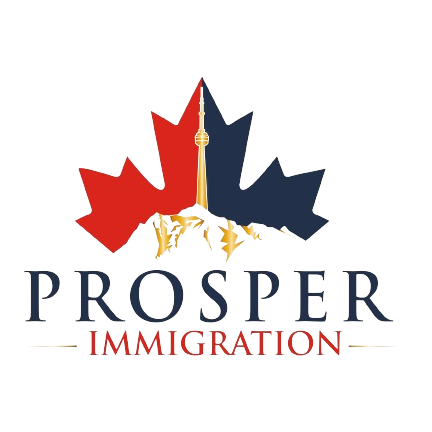Labour Market Impact Assessment(LMIA) based workers in Canada.
The employee can submit a work permit application after the employer receives the LMIA.
A worker needs the following documents to submit an application for a work permit:
- A contract,
- A job offer letter,
- A copy of the LMIA, and
- The LMIA number.
Should you obtain An LMIA?
As an employer, you must assess whether hiring is required before you begin. The LMIA will attest to the necessity of the temporary work and the absence of qualified Canadians or permanent residents for the position.
There are several methods for determining whether an LMIA is required. They consist of:
- Study the work permit exemptions and LMIA exemption codes, OR
- Contact the International Mobility Workers Unit (IMWU, which is only available if you are recruiting a temporary foreign worker from a nation whose citizens do not require a visa and are currently outside of Canada.
What are the Eligibility Requirements for an LMIA/LMO:
Your LMIA application will be forwarded to Employment and Social Development Canada after you have submitted it (ESDC). Several factors will be considered when examining your application. These elements consist of:
- Is the position open and willing to be filled by a Canadian in the area?
- Has the company put forth enough effort to find a Canadian worker to fill the position?
- Will hiring a foreign worker help Canada keep or generate jobs?
- Is the compensation or wage being offered by the business in line with the regional average for the position in question?
- To what extent do the working conditions comply with Canadian labor laws?
- Existing labor issues with the company or the sector in which the job is located?
Different Types of LMIA Applications:
High-Paid Employees:- All Canadian firms wanting to engage a temporary foreign worker(s) at a wage equivalent to or above the provincial/territorial median hourly wage must have a transition plan in place before hiring high-paid foreign employees.
– A Schedule C form to the application for an LMIA contains the Transition Plan. The Transition Plan outlines a business’s commitments concerning the profession and place of employment for which they are looking for TFWs.
Low-Wage Employees:- When requesting an LMIA, a transition plan is not required when hiring low-wage workers. Low-wage workers are subject to a limitation that restricts the number of employees a business can hire, unlike high-wage workers.
– Employers in Canada with more than ten workers will only be allowed a maximum of 10% of low-wage temporary foreign workers.
– This cap will be gradually implemented over the next two years to give Canadian employers time to switch to a Canadian workforce.
Agricultural Workers’ LMIA:
– Employment and Skills Development Canada (ESDC)/Service Canada must receive a Labour Market Impact Assessment (LMIA) application together with the required supporting documentation from employers who wish to hire a temporary foreign worker (TFW) under the Seasonal Agricultural Worker Program (SAWP).
– In essence, employers are asking for an assessment of the potential effects of hiring a TFW on the Canadian labor market. Therefore, employers must take all necessary actions and submit all required papers.
LMIA for Agricultural Seasonal Workers:
– Employment and Skills Development Canada (ESDC)/Service Canada must receive a Labour Market Impact Assessment (LMIA) application together with the required supporting documentation from employers who wish to hire a temporary foreign worker (TFW) under the Seasonal Agricultural Worker Program (SAWP).
– Employers want to assess the potential effects of hiring a TFW on the Canadian labor market. Because of this, employers must follow all applicable procedures and turn in all required documentation.
LMIA to Support a Request for Permanent Residency (PR) Visa:
– Employment and Social Development Canada (ESDC)/Service Canada must receive a Labour Market Impact Assessment (LMIA) application from employers who want to hire a foreign worker, together with any necessary supporting documents.
– In essence, employers are looking for an opinion on the effects of hiring a foreign worker on the Canadian labor market. Therefore, employers must take all necessary actions and turn in all required papers.
LMIA with Dual Intent:
– This kind supports both a work permit and an Express entrance application. Such an LMIA can be useful when submitting a Canadian application for permanent residence. It may help a candidate get 50–200 CRS points depending on the National Occupation Classification (NOC) type. As was previously said, depending on the compensation offered, the employer must choose whether to hire the foreign worker on a high or low pay basis.
Global Talent Stream LMIA:
– To help you expand your workforce in Canada and maintain your competitiveness on a worldwide scale, the Global Talent Stream offers a swift, responsive, and predictable client-focused service.
– This Stream, a component of the Temporary Foreign Worker Program, is intended for forward-thinking Canadian businesses referred to Employment and Social Development Canada by a reputable referral partner and needs distinctive and specialized foreign nationals to expand and flourish. The Global Talent Occupations List is also for Canadian companies looking to fill highly skilled positions.
LMIA for Homecare Providers:
– Employers must submit a Labour Market Impact Assessment (LMIA) application to Employment and Social Development Canada (ESDC)/Service Canada together with the required supporting documentation to hire a temporary foreign worker (TFW).
– In essence, employers are looking for an opinion on how hiring a TFW will affect the Canadian labor market. Therefore, employers must take all necessary actions and turn in all required papers.
Following the approval of your LMIA application:
You should send a copy of the LMIA letter and Annex A to the foreign worker as soon as your application is granted. The foreign employee can then apply for a work permit after that. Processing dates may vary depending on where a work permit application was submitted.



